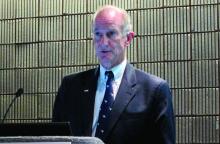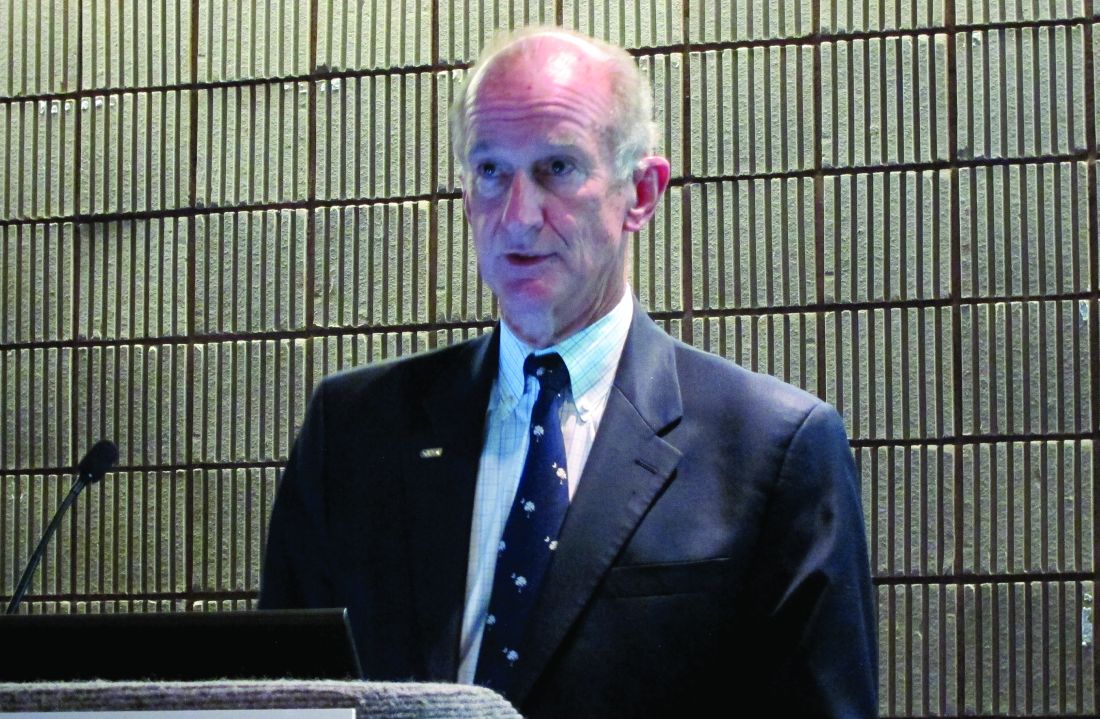User login
NEW ORLEANS – All of the growth in the obesity epidemic in young American schoolchildren takes place during their summer vacations, Paul T. von Hippel, PhD, reported at Obesity Week 2016.
He presented an analysis from the Early Childhood Longitudinal Study, Kindergarten Class of 2010-2011 which included a nationally representative study population composed of 18,170 U.S. children in 970 schools who were followed with serial weight and height measurements from the start of kindergarten in 2010 through the end of second grade in 2013.
During the summer, the prevalence of both overweight and obesity increased by roughly 1 percentage point per month. In contrast, during the more than 9 months of each school year, the prevalence of overweight didn’t budge, while the prevalence of obesity decreased modestly, by 0.1 percentage points per month.
These data have far-reaching public health implications. The new evidence suggests that the major risk factors for obesity are located outside of schools. That helps explain why many school-based initiatives focused on improving the nutritional content of school lunches and promoting physical activity have had little impact on the pediatric obesity epidemic, said Dr. von Hippel of the University of Texas at Austin.
The data suggest it’s time to explore the potential of reshaping out-of-school behaviors by promoting summer school and summer camp, curbing food advertising directed at children, providing parental nutrition education, and other interventions, he added.
The explanation for the observed increase in body mass index during summer vacation is unclear. It’s known from other studies that children sleep less and engage in more screen time during summer, which may be relevant, according to Dr. von Hippel.
Simultaneous with Dr. von Hippel’s presentation at Obesity 2016, the study was published online in the journal Obesity (2016 Nov 2. doi: 10.1002/oby.21613).
He reported having no financial conflicts of interest regarding the study, which was funded by the Russell Sage Foundation.
NEW ORLEANS – All of the growth in the obesity epidemic in young American schoolchildren takes place during their summer vacations, Paul T. von Hippel, PhD, reported at Obesity Week 2016.
He presented an analysis from the Early Childhood Longitudinal Study, Kindergarten Class of 2010-2011 which included a nationally representative study population composed of 18,170 U.S. children in 970 schools who were followed with serial weight and height measurements from the start of kindergarten in 2010 through the end of second grade in 2013.
During the summer, the prevalence of both overweight and obesity increased by roughly 1 percentage point per month. In contrast, during the more than 9 months of each school year, the prevalence of overweight didn’t budge, while the prevalence of obesity decreased modestly, by 0.1 percentage points per month.
These data have far-reaching public health implications. The new evidence suggests that the major risk factors for obesity are located outside of schools. That helps explain why many school-based initiatives focused on improving the nutritional content of school lunches and promoting physical activity have had little impact on the pediatric obesity epidemic, said Dr. von Hippel of the University of Texas at Austin.
The data suggest it’s time to explore the potential of reshaping out-of-school behaviors by promoting summer school and summer camp, curbing food advertising directed at children, providing parental nutrition education, and other interventions, he added.
The explanation for the observed increase in body mass index during summer vacation is unclear. It’s known from other studies that children sleep less and engage in more screen time during summer, which may be relevant, according to Dr. von Hippel.
Simultaneous with Dr. von Hippel’s presentation at Obesity 2016, the study was published online in the journal Obesity (2016 Nov 2. doi: 10.1002/oby.21613).
He reported having no financial conflicts of interest regarding the study, which was funded by the Russell Sage Foundation.
NEW ORLEANS – All of the growth in the obesity epidemic in young American schoolchildren takes place during their summer vacations, Paul T. von Hippel, PhD, reported at Obesity Week 2016.
He presented an analysis from the Early Childhood Longitudinal Study, Kindergarten Class of 2010-2011 which included a nationally representative study population composed of 18,170 U.S. children in 970 schools who were followed with serial weight and height measurements from the start of kindergarten in 2010 through the end of second grade in 2013.
During the summer, the prevalence of both overweight and obesity increased by roughly 1 percentage point per month. In contrast, during the more than 9 months of each school year, the prevalence of overweight didn’t budge, while the prevalence of obesity decreased modestly, by 0.1 percentage points per month.
These data have far-reaching public health implications. The new evidence suggests that the major risk factors for obesity are located outside of schools. That helps explain why many school-based initiatives focused on improving the nutritional content of school lunches and promoting physical activity have had little impact on the pediatric obesity epidemic, said Dr. von Hippel of the University of Texas at Austin.
The data suggest it’s time to explore the potential of reshaping out-of-school behaviors by promoting summer school and summer camp, curbing food advertising directed at children, providing parental nutrition education, and other interventions, he added.
The explanation for the observed increase in body mass index during summer vacation is unclear. It’s known from other studies that children sleep less and engage in more screen time during summer, which may be relevant, according to Dr. von Hippel.
Simultaneous with Dr. von Hippel’s presentation at Obesity 2016, the study was published online in the journal Obesity (2016 Nov 2. doi: 10.1002/oby.21613).
He reported having no financial conflicts of interest regarding the study, which was funded by the Russell Sage Foundation.
AT OBESITY WEEK 2016
Key clinical point:
Major finding: Between the start of kindergarten and the end of second grade, the prevalence of overweight in a large group of U.S. children grew from 23.3% to 28.7%, with all of the increase coming during their two summer vacations.
Data source: The Early Childhood Longitudinal Study, Kindergarten Class of 2010-2011 included a nationally representative study population composed of more than 18,000 children who were followed with multiple weight and height measurements from the start of kindergarten through the end of second grade.
Disclosures: The study was funded by the Russell Sage Foundation. The presenter reported having no financial conflicts of interest.

